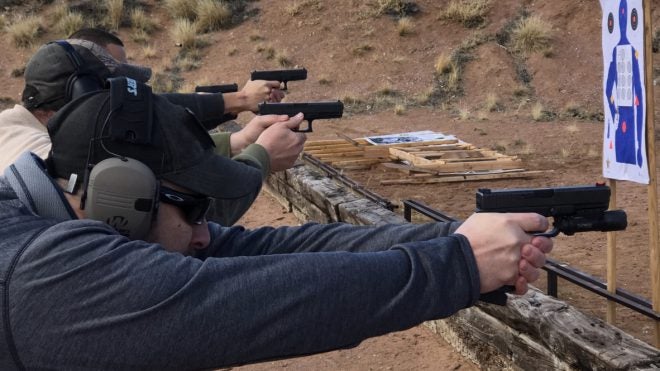As I have mentioned before in articles, I like to consider myself a life long student. This year I am setting a goal to attend some type of firearms training or event every month.
I realized over the past few years that I have been taking more advanced classes progressively. One thing I have never done is gone back to the basics. In the US it is a right to bear arms; I believe it is a personal responsibility to be proficient with any weapon that you own and use. One fear I have with hours and countless repetitions of dry fire is that I have engineered poor manipulations. While I confirm skills by doing live fire, my groups are just not as tight as I would like them to be.
At SHOT, this past year, I ran into a familiar face–one of the team leaders from my Iraq deployment. His name is Oscar Sanchez, and one of the things that I remembered about him was during our pre-deployment shooting package (analogous to SOTG), he was the only student that scored a perfect throughout the course. He also demonstrated firearms knowledge above and beyond even the other Recon Marines. Oscar currently runs a training company that conducts many courses, from concealed handgun licensing through precision long range, to civilians, law enforcement, and military.
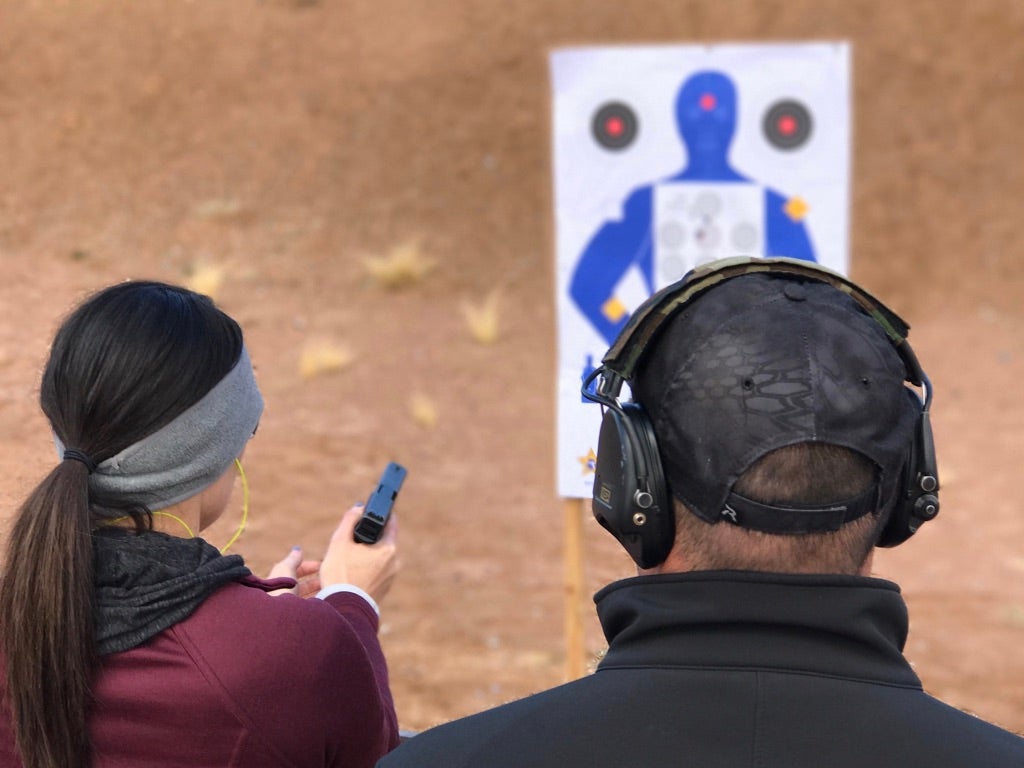
Fundamentals are for everyone; not just beginners.
I had already had in my mind to go “back to the basics” and take training that would reinforce the fundamentals of shooting. The perfect storm was created–why not take a class from someone I recall as being a consummate professional on the range (and off)? After reviewing their website, I was initially interested in Quiet Professional’s Basic Handgun Course. After discussing my goals with Oscar, he suggested taking their next upcoming concealed handgun licensing (CHL) class. In New Mexico, a typical CHL class is 15 hours of classroom (by regulation) and an amazingly hard 25 round qualification (sarcasm)–and most classes are not going to go much beyond that number. I raised an eyebrow, and then he explained that their CHL course required 250 rounds. Okay, that is more what I was looking for…
Classroom
The classroom part of the course is exactly what you should expect, with the exception that Quiet Professional’s course exceeded the minimum requirement. I have been through a number of CHL courses (in multiple states) over the course of my various careers. Let’s just say the material is generally pretty dry, full of legalese, and typically death by PowerPoint. That is generally followed by a sad and minimal shoot on the range. Quiet Professional’s course was a little more dynamic. There was a slide deck, but the material was well supplemented with discussions and examples.
The other thing that is a departure from other courses, and really set the expectation for the rest of this course, was the class handout. It was a bound booklet, full-color, including the PowerPoint slides. Yes, it is a small detail, but I’ve been in classes where you get a poorly photocopied set of the local regulations (and the course went downhill from there). If the organization is going to offer handouts, but doesn’t put in the effort to do a professional job, what else are they potentially deficient with? I mention this because, as you take courses to better your skills, don’t pick courses just because of an instructor’s name. Instructors may be extremely proficient skills-wise, but are poor at imparting the material, or are poor with organization. Good teachers possess the trifecta of competent skills, the ability to educate, and course management.
Range Time
The shooting part of the course was where the class departed from standard CHL curriculum and was the material I was most interested in, having maintained a CHL in some form, or another, for the past 17 years.
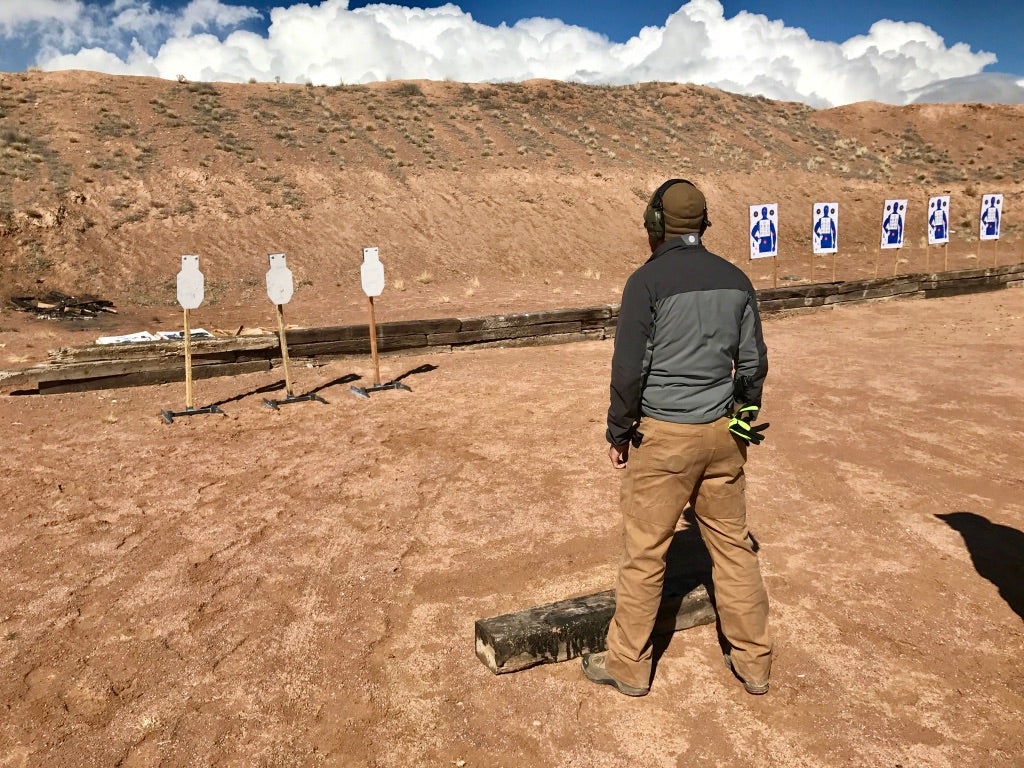
Another difference in this class is that all of the instructors demonstrated the drills live. They performed at the level (and beyond) that they expected us to be at.
A safety brief was given, and the drills were explained. First up would be working through the presentation of the handgun while dry, and “by the numbers.” Honestly, this was the meat of the class and the part that helped make the biggest difference. The five main components or presentation are:
- Acquire a final, firm firing grip
- “Rock and Lock” (cute phrase for bringing the gun up to a retention hold against the body)
- Acquire two-handed grip
- Acquire sight alignment/sight picture
- Press trigger
In those five steps, a wealth of nuance was provided. For instance, somewhere along the way, I had developed a bad habit of gripping the firearm with equal maximal pressure. This was creating way too much tension in my whole platform. Instead, I was instructed to lighten my grip to more of a “firm, steady handshake.”
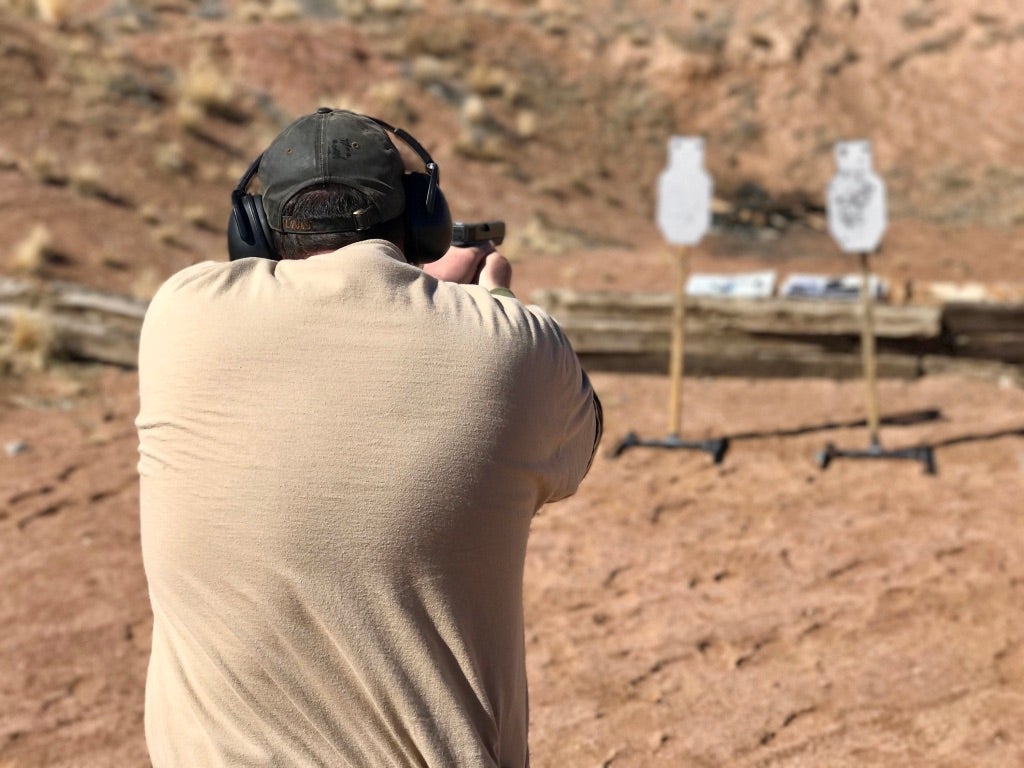
We even had a southpaw in the class.
I also had developed the habit of pointing everything at the target–right thumb stacked on top of left. This initial firing grip put my thumb tight against the frame, which balled up the base of my thumb, and didn’t allow my support hand to effectively contact the frame, creating a slight gap. I compensated for this with the overly tense grip. Which created fatigue, and a general inconsistent press of the trigger. Little details like that were some of the fundamentals I had lost and had a hard time recognizing myself. The other consequence of too tight a grip, and stacked thumbs, on my Glock 17 was that my thumb would sometimes activate the slide release throughout the firing process, and my slide would not lock back. Weak spring? Nope. Bad grip.
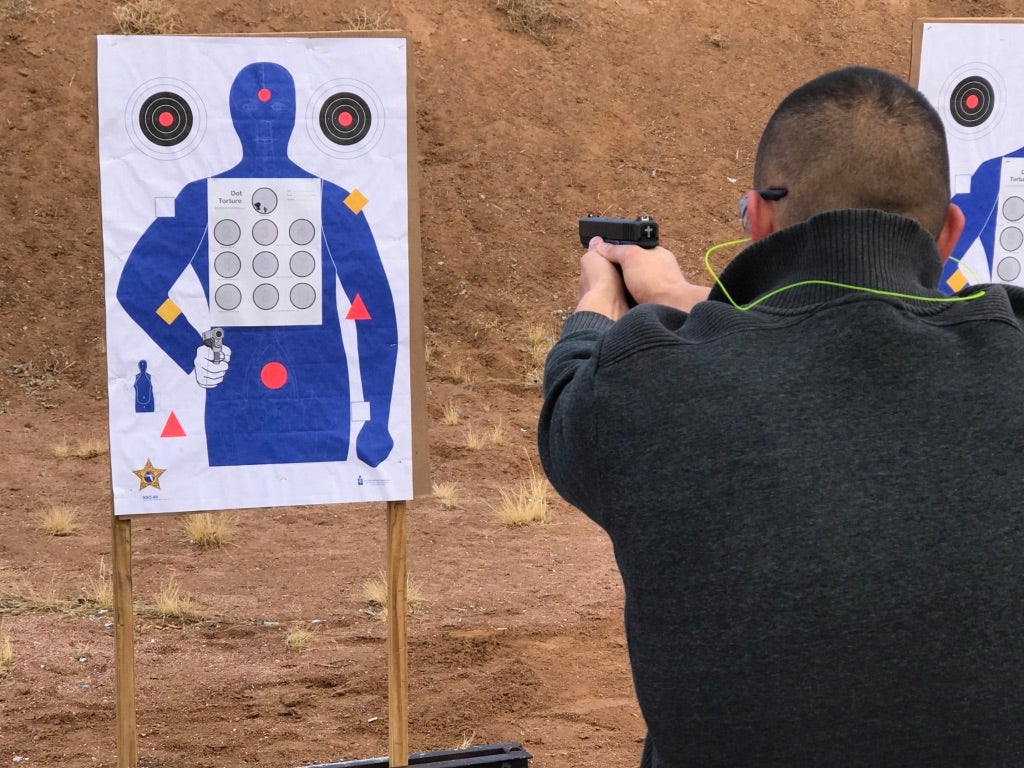
Dot Torture is one of the best pistol marksmanship drills you can do. And in this “basic” CHL class, we spent time doing it.
I also had a small problem with occasionally “peeking,” especially when I felt I had thrown a round. This was nothing more than bad follow through. I would drop a round, which made me peek, which in turn lead to dropping more rounds, ad nauseum.
I was also reminded of a few other concepts I had simply forgotten the reason for doing and had eliminated from my practicing. Conducting a chamber check before reholstering is an example. I figured that when I ran dry, I would just change out my magazine as normal. I would know I was dry because my slide would lock back, right? Except, because of my flawed grip, sometimes the slide would drop on an empty chamber. I could technically be holstering a “hammer” and not a firearm. Doing a chamber check after the shooting set, allows me to visually inspect and confirm there is at least a single round in the chamber.
Graduation
After a weekend of training (minus the required classroom time since this was technically a CHL class), I saw immediate improvement. And I picked up many pointers that will help during future practice. I could probably double the size of this article discussing the drills and other gems from the class. Suffice to say it was a well spent weekend (though one could argue any weekend spent on the range is a good weekend).
Overall was a good reminder for me to go back and, not only focus on fundamentals but to get some outside feedback from professionals. The instructors of the Quiet Professional Defense class I took (Oscar, Harrison, Chuck, and Paul) conducted top notch training, even during a “lowly” CHL course. Despite being what most people would consider being a very entry level class, the basic pistol instruction was far above the level I was expecting and may have unfairly set future expectations for the students in the class that were new to concealed carry.
The takeaway from this article is, every once and a while, forget about the high-speed, cool-guy training and get back to fundamentals. Ensure your building blocks are rock solid, and remember the quote (attributed to Vince Lombardi): “Practice does not make perfect. Only perfect practice makes perfect.”
And if you happen to be interested in some excellent training, especially in our wonderful state, I recommend checking out Quiet Professional Defense: http://qprodefense.com/
Note: The author paid for this class in full with his own funds.
 Your Privacy Choices
Your Privacy Choices
